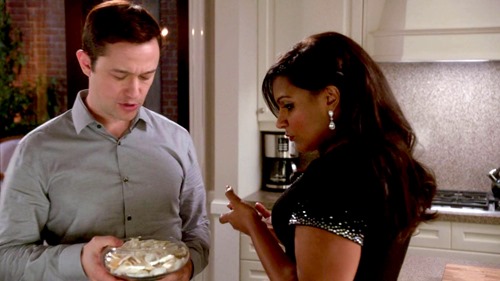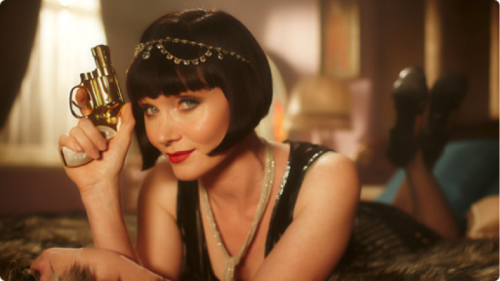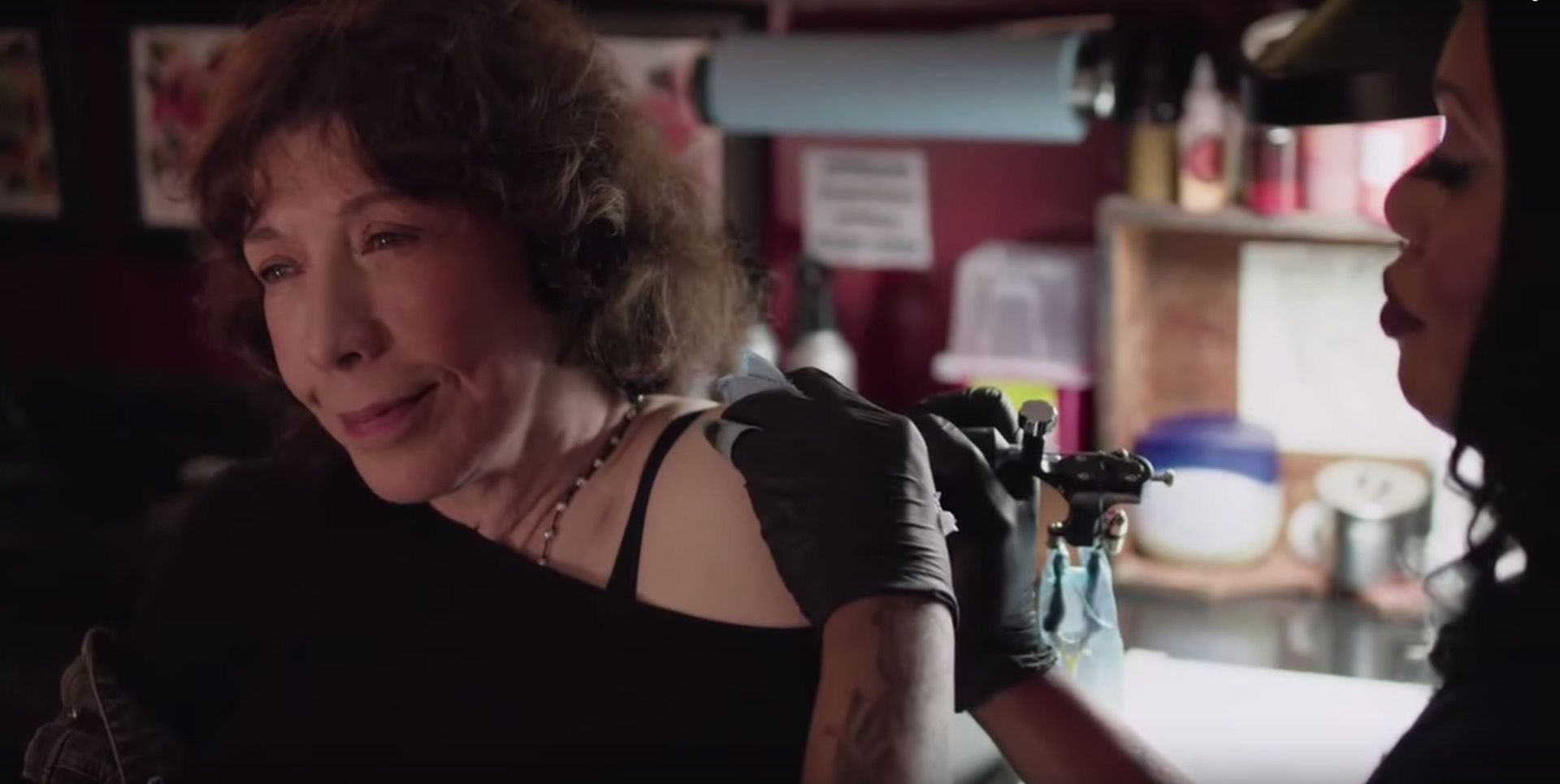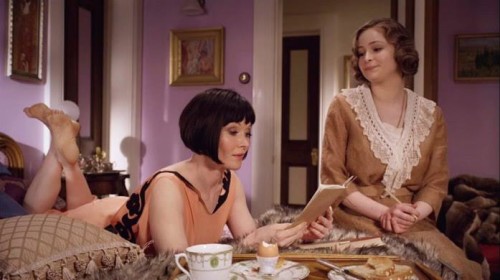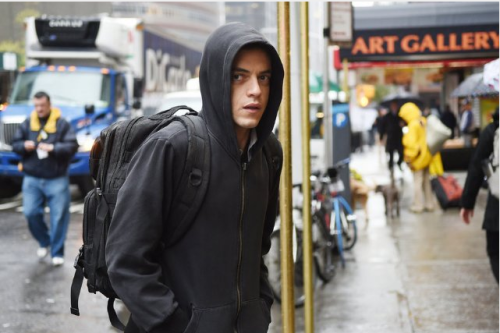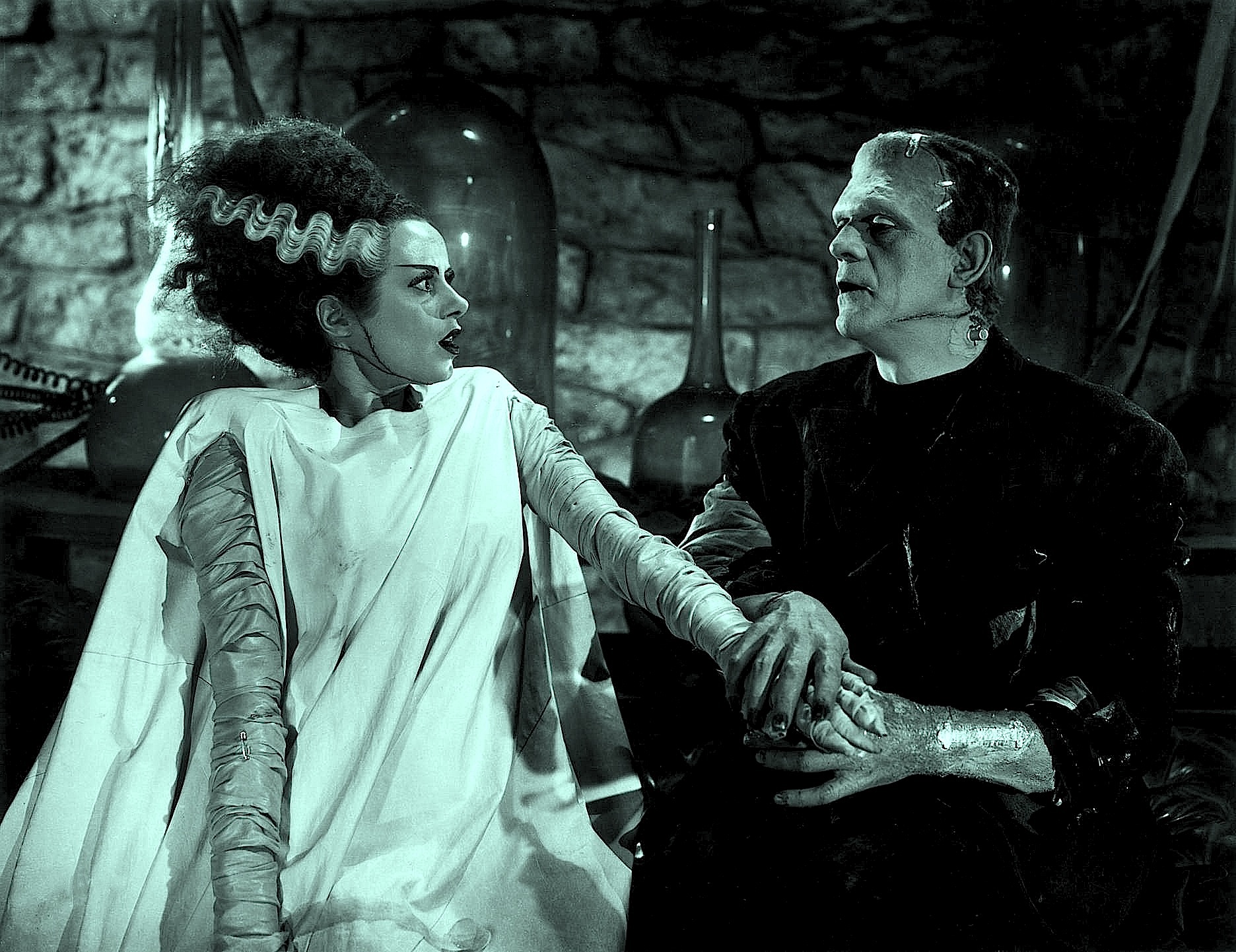Written by Katherine Murray.
I like Mindy Kaling and I like her show, but the season premiere demonstrates how, like many series, The Mindy Project has ambivalent feelings about what kind of sex is OK.
In the season premiere of The Mindy Project, “While I Was Sleeping,” Mindy Lahiri falls asleep and has a nightmare about what her life would have been like if she hadn’t hooked up with her relatively more conservative boyfriend, Danny (who has meanwhile traveled to India to explain to Mindy’s parents that marriage is a flawed institution and not the right choice for him at this moment in time).
In the dream sequence, Mindy is married to a TV producer played by Joseph Gordon-Levitt, who lets her keep her South Park pinball machine in the living room and stops her from eating seashells when she mistakes them for candy. At first, this seems like the ideal arrangement, but Mindy soon discovers that she’s having an affair with one of the guys who works in her building. When she confesses the affair to Joseph Gordon-Levitt, he explains that he’s totally cool with it, because they have an open marriage. Furthermore, he’s bisexual, and he likes it when they have a three-way with another guy.
Confronted with what sounds to me like the perfect partner, Mindy recoils in horror, treating the three-way-with-a-dude element as the final nail in the coffin rather than the icing on a very delicious-sounding cake.
That much is fine. Not everyone wants the same things and, if Mindy wants to be in a monogamous relationship with a strictly heterosexual man, that’s cool – it’s her choice. I can see how this would be a nightmare scenario for her. But the way her reaction is framed turns it into a value judgement about any kind of relationship that isn’t strictly monogamous.
Rather than just saying, “Hey, this is not what I want – I’m in love with Danny and I want to have a more traditional relationship with him,” Mindy uses this as an opportunity to learn a lesson about how Danny’s positive influence on her has saved her from the fate of immature, hedonistic living. She complains to Joseph Gordon-Levitt that, if she had suggested something like this to Danny, he would have told her to “walk around the block and cool [her] loins” (a joke that pays off when this is, verbatim, what Danny says when she later tells him about this dream). After she wakes up, she also explains to Danny that the lesson she learned is that they make each other better people.
It’s true that Mindy and Danny have always had an opposites-attract relationship, the point of which has always been that they make each other better and more interesting people because they challenge each other to grow. However, I’m a little uncomfortable with the idea that being in an open relationship or having a three-way now and then is an example of Mindy being a “worse” person than she is with Danny.
The Mindy Project has always been a little bit weird about sex. On the one hand, it can be extremely sex-positive and often does the important work of showing us a world in which a woman who doesn’t fit the traditional standard of beauty is still considered desirable, and allowed to feel desire herself. There’s a weird but interesting episode in season three where Mindy discovers that Danny was a stripper at one point in the past (a plot point that seems to have more to do with Chris Messina’s background in dance than with organic character development, but fine). The whole point of that episode is about learning to treat your partner’s past as a fun, sexy surprise rather than something that threatens your relationship, and it includes a really rare example of the female gaze – we’re invited to see Danny as an object of desire without it turning into a joke and without either of the characters getting uncomfortable or embarrassed about it.
On the flipside – while respecting that this is a comedy – the Danny-was-a-stripper episode stands out because discussions and depictions of Mindy’s sex life usually involve a lot of self-deprecating humour to the tune of “It’s not really sexy when she does this.” For example:
I have, over the years, devised a series of illusions and tricks so that my boyfriend never sees me naked when we’re having sex. I hide under the sheets. I pretend that I’m really into blindfolds. Sometimes, I hide in the shadows of candlelight and then I’m like, “boo!” Phantom of the Opera-style.
That’s a funny joke, but it’s part of a series of funny jokes that belie a certain amount of discomfort with the character’s sexuality. It’s the same kind of humour that underpins the joke where Mindy keeps telling everyone how hot she is – the subtext is that her arrogance plays differently because we wouldn’t “expect” her to think this about herself.
The piece de resistance in terms of “I’m not sexy” comedy, though, comes when Mindy imitates the whipped cream bikini scene from Varsity Blues while she video chats with her boyfriend. Instead of a bikini, she makes a modest one-piece swimsuit, and then falls off camera after getting attacked by ants.
Taken in that context, the alternate universe open marriage that Mindy finds herself in in “While I Was Sleeping” seems to be an extension of the idea that there’s something goofy and immature about the sexual situations Mindy gets herself into in the absence of a stabilizing influence like perpetual wet blanket, Danny. The scene isn’t mean-spirited or openly critical, but it takes for granted that the situation Joseph Gordon-Levitt is describing is not OK.
I don’t want to get into a debate about Mindy Kaling’s politics – though it’s safe to say she’s more conservative than I am in some respects, and that’s all right – but watching this scene also reminded me of the essay she wrote for Is Everyone Hanging Out Without Me? a few years ago, where she describes the difference between what she calls “boys” and “men” and why she recommends that women over 30 focus on trying to date more “men.” Quoth the essay:
Peter owned a house. It wasn’t ritzy or anything, but he’d really made it a home. The walls were painted; there was art in frames. He had installed a flat-screen TV and speakers. There was just so much screwed into the walls, so much that would make you lose your deposit. I marveled at the brazenness of it. Peter’s house reminded me more of my house growing up than of a college dorm room. I’d never seen that before. … I observed in Peter a quality that I knew I wanted in the next guy I dated seriously: He wasn’t afraid of commitment.
… I’m not talking about commitment to romantic relationships. I’m talking about commitment to things—houses, jobs, neighborhoods. Paying a mortgage. When men hear women want a commitment, they think it means commitment to a romantic relationship, but that’s not it. It’s a commitment to not floating around anymore. I want a guy who is entrenched in his own life. Entrenched is awesome.
… I want a schedule-keeping, waking-up-early, wallet-carrying, picture-hanging man.
That list of wants seems to describe the character of Danny Castellano pretty well, and it also seems to support the idea that Mindy (the character) learning to have a mature, responsible relationship with someone like Danny is a sign of personal growth – a sign, specifically, that she’s grown out of the stage where she’s “floating around” exploring possibilities and trying to figure out who she is. It’s a sign of entering the state in life where you start to foreclose on possibilities – a stage where you start to decide who you’re going to be and how you’re going to live, and those decisions get harder to change.
It’s true that there’s a certain extent to which this has to happen for everyone. Life is finite – time runs out. As you get older, you start to become aware that opening one door closes three others. It isn’t possible to do and be everything – you have to make choices.
At the same time, the degree to which we “settle down” isn’t universal. I’m older than 30, and I don’t want to date the guy Mindy describes as a “man.” I don’t want to be that guy, either. I like who I am now, but I also like the idea that I could turn out to be someone different one day. I want to be able to move easily, if that happens.
What does this have to do with a joke about seashells and having a three-way? It has to do with the cultural narrative we have about what it means to be a grown-up – the one that says “You have to foreclose on lots of possibilities as you get older, and one of the possibilities you have to foreclose on is having sex with anyone who’s not your spouse.” That’s the narrative that underpins the jokes in “While I Was Sleeping” – and I found those scenes unsettling not because they personally insulted me – they didn’t – but because I’m not sure I buy into this idea that, in order to be a good adult, I have to be excited for a mortgage.
Also, it feels like everyone I know on Facebook is now married with a house – but that’s a post for a different blog.
Katherine Murray is a Toronto-based writer who yells about movies and TV (both real and made up) on her blog.
